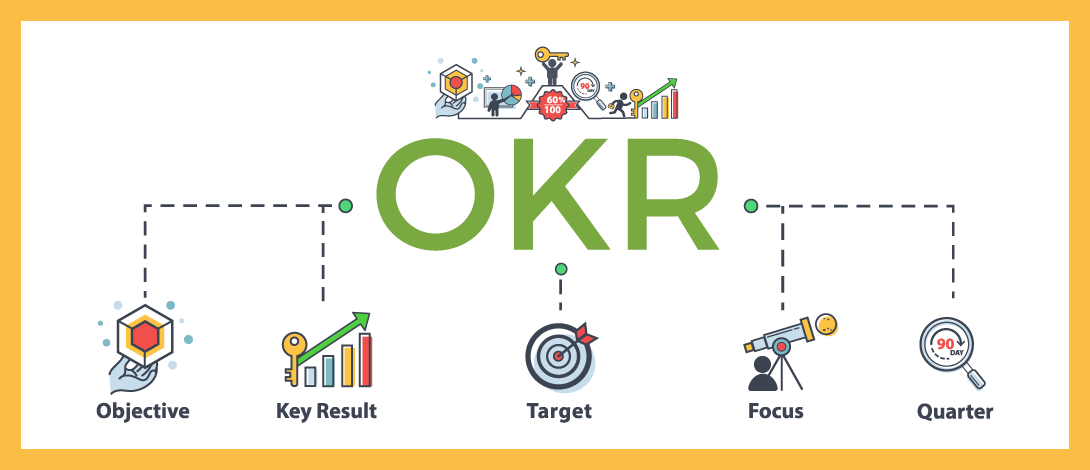In today’s fast-paced business environment, organizations are constantly seeking effective strategies to drive success and achieve their goals. One approach that has gained significant popularity is OKR (Objectives and Key Results). OKRs provide a framework for setting ambitious objectives and tracking key results to measure progress and drive performance. In this article, we will explore the process of implementing and executing OKRs, uncovering the key steps and best practices that can unlock success for organizations.
Understanding the Fundamentals of OKRs: To successfully implement OKRs, it is crucial to grasp the fundamentals of this goal-setting methodology. This section will delve into the definition of objectives and key results, explain the relationship between the two, and highlight the importance of alignment and transparency in setting OKRs.
Defining Clear and Ambitious Objectives: The first step in OKR implementation is defining clear and ambitious objectives that align with the organization’s overall vision and strategic direction. This section will outline the characteristics of effective objectives, such as being specific, measurable, achievable, relevant, and time-bound (SMART). It will also emphasize the importance of setting stretch goals that push teams to reach for higher levels of performance.
Setting Key Results: Key results serve as the measurable milestones that indicate progress towards achieving the objectives. In this section, we will discuss the process of setting meaningful and actionable key results. We will explore the concept of leading and lagging indicators, ensuring that key results are both quantifiable and aligned with the objectives they support.
Cascading OKRs and Ensuring Alignment: OKRs should not exist in isolation; they need to be cascaded throughout the organization to ensure alignment and coordination. This section will cover strategies for cascading OKRs from top-level objectives down to individual contributors, fostering a sense of purpose and collaboration across teams and departments. It will also address the importance of regular check-ins and communication to maintain alignment and provide support where needed.
Tracking and Monitoring Progress: A critical aspect of OKRs execution is tracking and monitoring progress towards achieving key results. This section will explore various methods and tools available for monitoring OKRs, including regular check-ins, progress updates, and data-driven insights. It will emphasize the need for continuous feedback and iteration to adapt OKRs as circumstances change.
Overcoming Challenges and Pitfalls: Implementing OKRs is not without its challenges. This section will identify common obstacles organizations may face during the implementation and execution of OKRs and provide strategies for overcoming them. It will address issues such as resistance to change, lack of buy-in, setting unrealistic goals, and the importance of fostering a culture that embraces experimentation and learning.
Celebrating Success and Learning from Failure: As OKRs drive progress and success, it is essential to celebrate achievements and recognize the efforts of individuals and teams. This section will discuss the importance of acknowledging and celebrating milestones reached and goals accomplished. Additionally, it will highlight the significance of learning from failures and leveraging them as opportunities for growth and improvement.
OKRs have proven to be a powerful tool for organizations seeking to unlock success and achieve breakthrough results. By following the guide outlined in this article, organizations can navigate the process of OKRs implementation and execution effectively. By setting clear objectives, defining measurable key results, cascading OKRs, and fostering a culture of transparency and accountability, organizations can harness the true potential of OKRs to drive success and unlock their full potential.

OKRs Success Stories: Inspiring Examples of Achieving Bold Goals
In the realm of goal-setting methodologies, OKRs (Objectives and Key Results) have gained significant traction for their ability to drive organizational success and push teams to achieve bold goals. OKRs provide a framework for setting ambitious objectives and measurable key results, enabling organizations to track progress and drive performance. In this article, we will explore inspiring success stories of organizations that have leveraged OKRs to achieve remarkable results and demonstrate the transformative power of this goal-setting methodology.
Google: Transforming the Tech Landscape: One of the most renowned examples of OKR success stories is Google. In its early stages, the company utilized OKRs to set audacious goals and revolutionize the tech landscape. From its mission to “organize the world’s information” to objectives like “improve search quality” and “increase user engagement,” Google’s OKRs empowered teams to focus on innovation and continuous improvement. Through OKRs, Google achieved remarkable feats, including the development of game-changing products like Gmail, Google Maps, and Android.
Intel: Driving Breakthrough Innovations: Intel, the global semiconductor giant, is another company that has harnessed the power of OKRs to achieve extraordinary results. By aligning their objectives with their core mission of pushing the boundaries of technology, Intel utilized OKRs to drive breakthrough innovations in the semiconductor industry. OKRs such as “launch next-generation processors” and “dominate the market for data center solutions” enabled Intel to stay at the forefront of technological advancements and maintain a competitive edge.
Airbnb: Revolutionizing the Hospitality Industry: Airbnb, the disruptive online marketplace for lodging and experiences, embraced OKRs as a means to transform the hospitality industry. By setting objectives like “expand into new markets” and “improve the user experience,” Airbnb leveraged OKRs to fuel their exponential growth. Through the use of key results that focused on metrics such as the number of hosts, guest bookings, and positive user reviews, Airbnb achieved remarkable success, disrupting traditional hospitality players and revolutionizing the way people travel and experience accommodations.
Spotify: Dominating the Music Streaming Market: Spotify, the popular music streaming platform, utilized OKRs to dominate the highly competitive music industry. With objectives centered around user engagement, content curation, and global expansion, Spotify set ambitious goals to drive its growth. By defining key results related to active users, subscription rates, and the number of songs streamed, Spotify strategically leveraged OKRs to enhance its product offerings and secure its position as a leader in the music streaming market.
Walmart: Enhancing Retail Operations: Walmart, the multinational retail corporation, implemented OKRs to optimize its retail operations and improve customer experience. By setting objectives related to inventory management, supply chain optimization, and customer satisfaction, Walmart used OKRs to drive operational efficiency and innovation. Key results tied to reduced product out-of-stock instances, increased customer loyalty, and improved employee productivity propelled Walmart’s success in meeting customer demands and maintaining its position as a retail industry leader.
Netflix: Revolutionizing Entertainment Consumption: Netflix, the global streaming giant, embraced OKRs to revolutionize the way people consume entertainment. With objectives centered around original content production, subscriber growth, and global expansion, Netflix used OKRs to drive its dominance in the streaming market. Through key results related to the number of new original series, customer retention rates, and international subscriber growth, Netflix disrupted traditional television models and revolutionized the entertainment industry.

Conclusion:
These success stories demonstrate the transformative impact of OKRs when effectively implemented and executed. Companies like Google, Intel, Airbnb, Spotify, Walmart, and Netflix have utilized OKRs to achieve bold goals, drive innovation, and disrupt industries. By setting ambitious objectives and measurable key results, these organizations harnessed the power of OKRs to focus their efforts, align their teams, and drive exceptional performance. Aspiring organizations can draw inspiration from these success stories and leverage OKRs to set audacious goals, unleash their potential, and achieve remarkable success in their respective industries.
